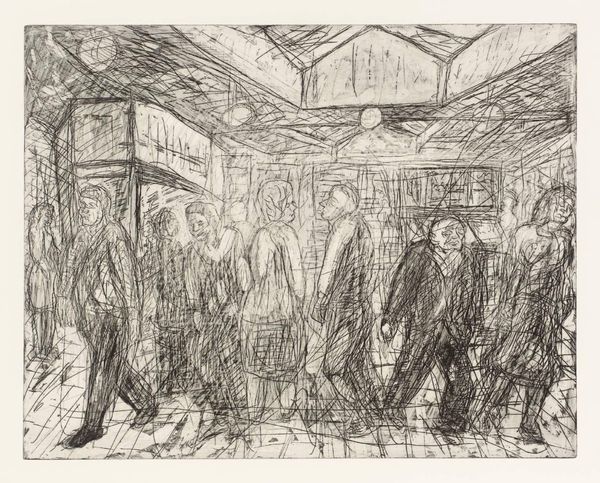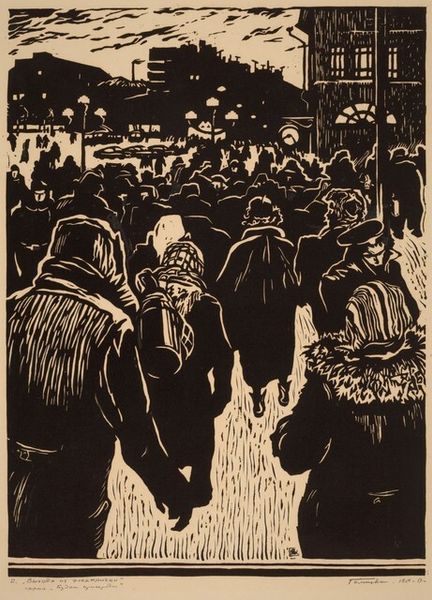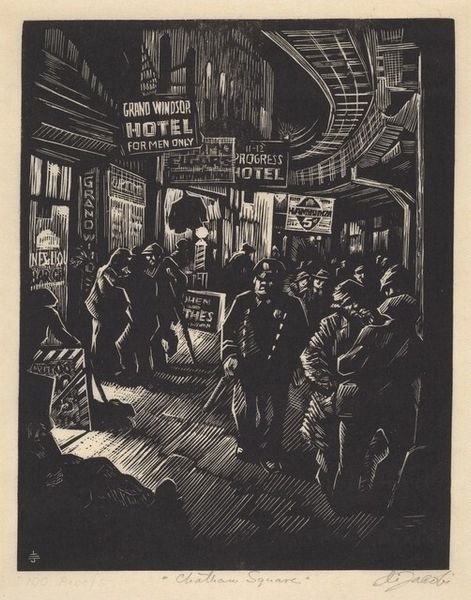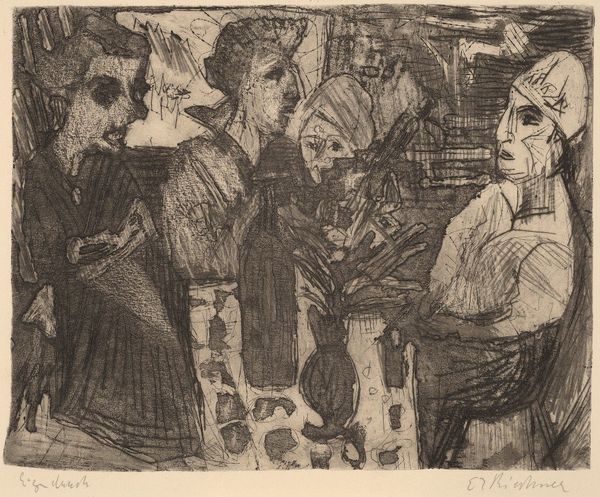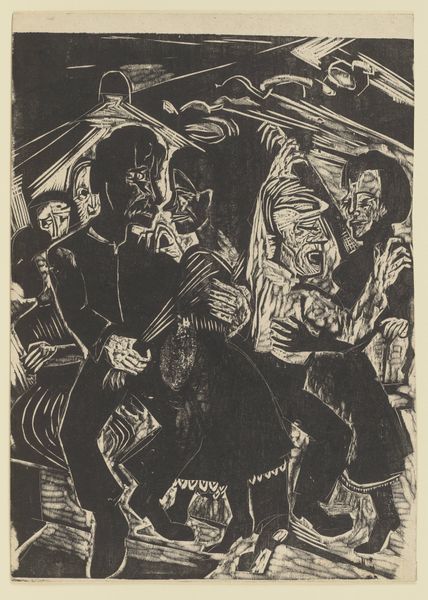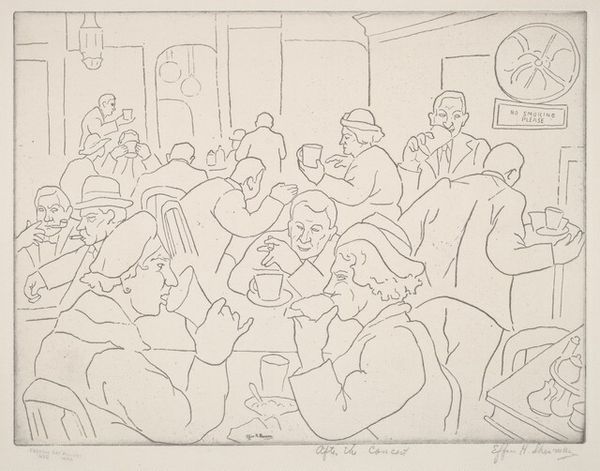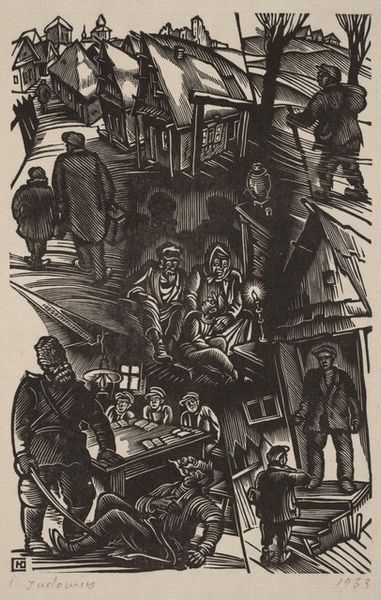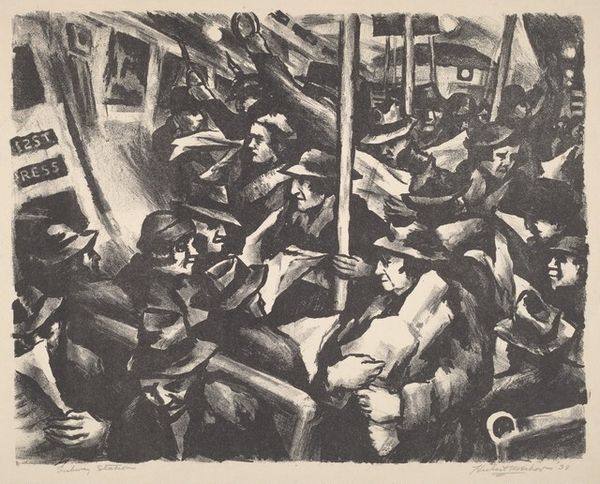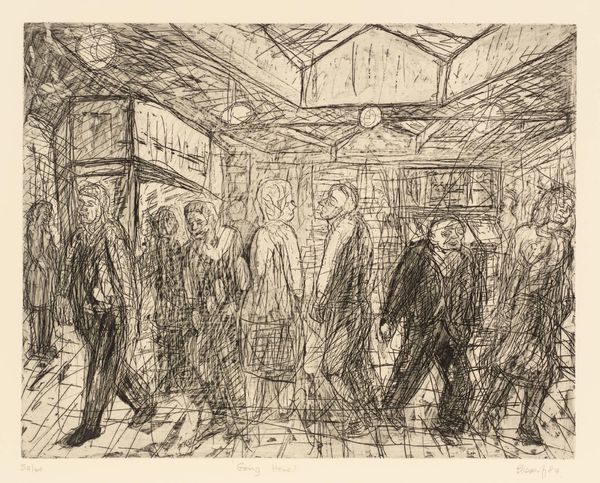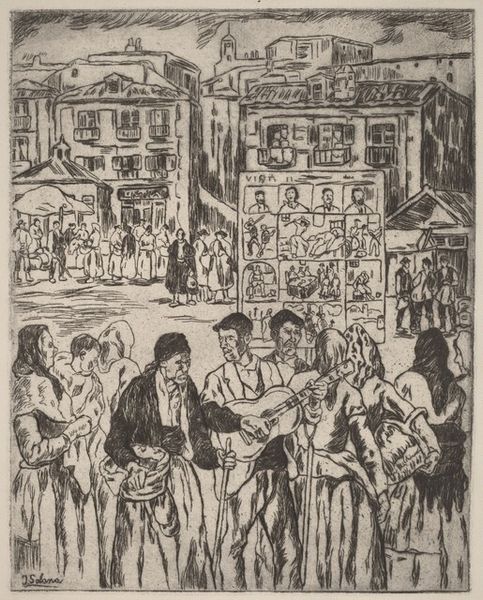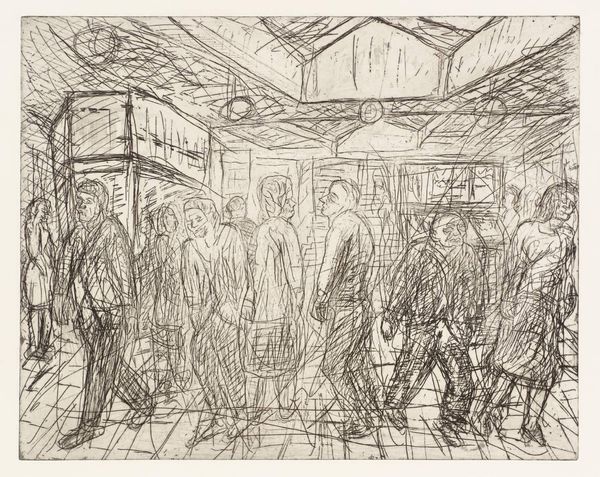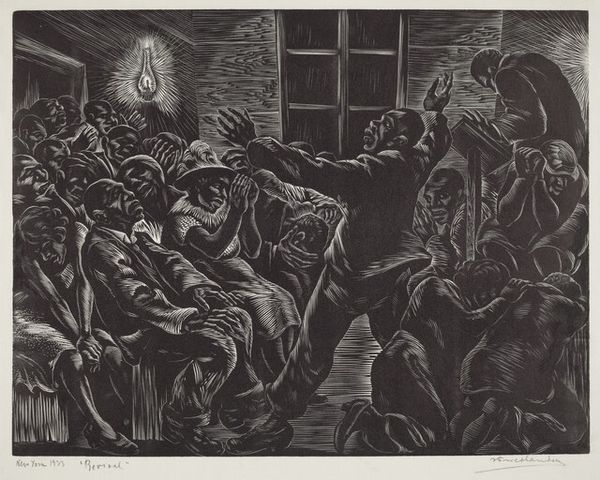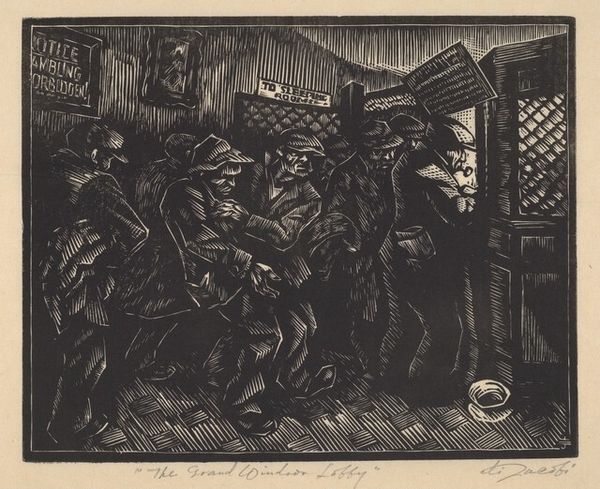
Copyright: National Gallery of Art: CC0 1.0
Curator: Let's delve into Ivan Gomenkov's woodcut print, "At the Peak Hour," created sometime between 1955 and 1957. Editor: Whew, I feel claustrophobic just looking at it! That packed train carriage... it's a visceral depiction of urban commuting. The harsh black and white amplifies the feeling of being crammed in. Curator: Indeed. The print uses a rather realist style to depict a very familiar Soviet theme: the masses utilizing public transport in a large city. Notice how Gomenkov's sharp lines give each face a unique, almost caricatured, quality. It speaks volumes about post-war urban life in the Soviet Union, as commutes grew more intense. Editor: There’s almost a grimness to it, despite the everyday scene. It feels raw, unromanticized. It's missing that socialist heroic painting optimism you might expect, you know? The woodcut lends itself perfectly to this, making it immediate and forceful. Curator: Precisely! This departure from overtly positive portrayals reflects a broader undercurrent in Soviet art where subtle social commentary became permissible, yet often veiled within genre scenes. The title, "At the Peak Hour," ironically understates the turmoil and tension depicted. Editor: It reminds me of grainy old films depicting ordinary lives during extraordinary times, the close quarters breathing life into everyone and crushing them. Also, look at the way Gomenkov used contrast—deep shadows and stark highlights give it real emotional depth. A visual poem for crowded spaces. Curator: Gomenkov expertly captured not just the physical reality of that packed commute, but also the emotional experience tied to it, the resilience, even stoicism of the passengers navigating their daily grind. It acts as both social documentation and psychological observation, typical within many Russian avant-garde pieces from the period. Editor: Absolutely, this piece has such depth that every little space speaks out its own meaning. Makes me rethink my aversion to taking the subway on rush hour; I'd almost welcome the chance now...almost! Curator: Gomenkov prompts us to see the artistic merit of life's ordinary moments and maybe look deeper the next time we commute ourselves. Editor: What I see now is how extraordinary ordinary life is, made immortal here on black and white. That´s pure gold.
Comments
No comments
Be the first to comment and join the conversation on the ultimate creative platform.
